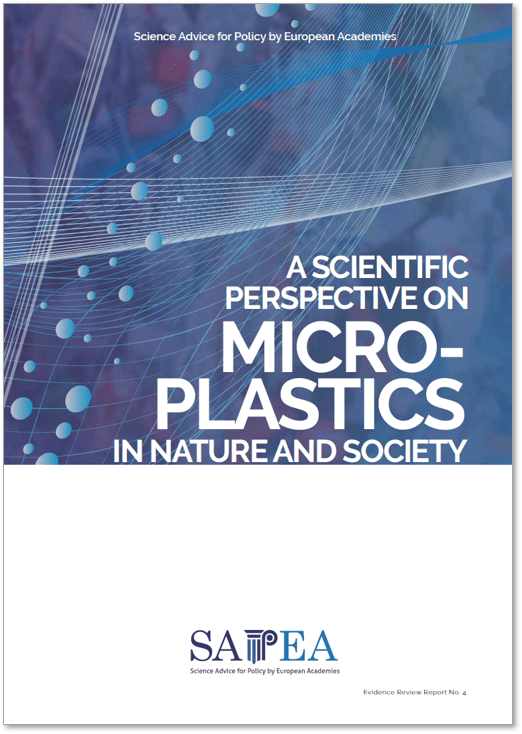This evidence review report addresses the complex issue of nano- and microplastic (NMP) pollution in nature and society. Commissioned by the European Commission’s Scientific Advice Mechanism, the report aims to inform policy by synthesizing current interdisciplinary scientific knowledge. It evaluates the state of the art in natural, social, behavioural, and legal sciences to support future EU policy on NMPs.
Key Findings:
-
Sources and Ubiquity: Microplastics (<5 mm) and nanoplastics (<0.1 μm) originate from primary sources (e.g. microbeads in cosmetics) and secondary fragmentation (e.g. tire wear, textiles). NMPs are found across all environmental media: air, water, soil, and food. Significant contributors include synthetic textiles (29%), car tires (42%), and household dust (19%).
-
Risk Assessment Challenges: There is significant complexity in assessing ecological and human health risks due to varied sizes, shapes, polymers, and additives. Most lab studies use concentrations far exceeding those in the environment. Currently, no conclusive evidence of widespread human health risks exists, although localized ecological risks may occur in coastal areas.
-
Exposure & Effects: Laboratory studies show potential impacts like inflammation and reproductive effects in aquatic species under high exposure, but real-world relevance is uncertain. Chemical exposure from microplastics contributes marginally (<0.2%) to overall chemical intake in diet (e.g., mussels, per EFSA).
-
Modelling and Uncertainties: Models are limited by a lack of harmonised methodologies. Nanoplastics remain largely unmeasured due to analytical challenges. Most fate and transport pathways, especially in air and soil, are not well understood.
Innovation Aspects:
-
Interdisciplinary Approach: This is one of the first reports to comprehensively integrate insights from natural, social, and behavioural sciences to shape policy, emphasizing the role of public perception, communication, and behaviour change in addressing NMP pollution.
-
Policy Interface: The report underpins the European Commission’s forthcoming Scientific Opinion on Microplastics by its Group of Chief Scientific Advisors. It identifies policy options using the precautionary principle, stressing need for emission reduction, circular economy, and material substitution to avoid future environmental and health risks.
-
Technological and Regulatory Gaps: The absence of standardised methods for sampling, detecting, and quantifying NMPs—especially nanoplastics—limits current impact assessments. There is also a gap in forensic identification technologies to trace plastic origins.
Recommendations:
-
Harmonise methodologies for detection and risk assessment of NMPs.
-
Increase research on human health effects, nanoplastics, and atmospheric exposure.
-
Implement interdisciplinary measures incorporating behavioural and regulatory science.
-
Enhance regulations to include explicit monitoring of NMPs using the precautionary principle.
-
Promote innovation in materials and sustainable design aligned with the circular economy.

